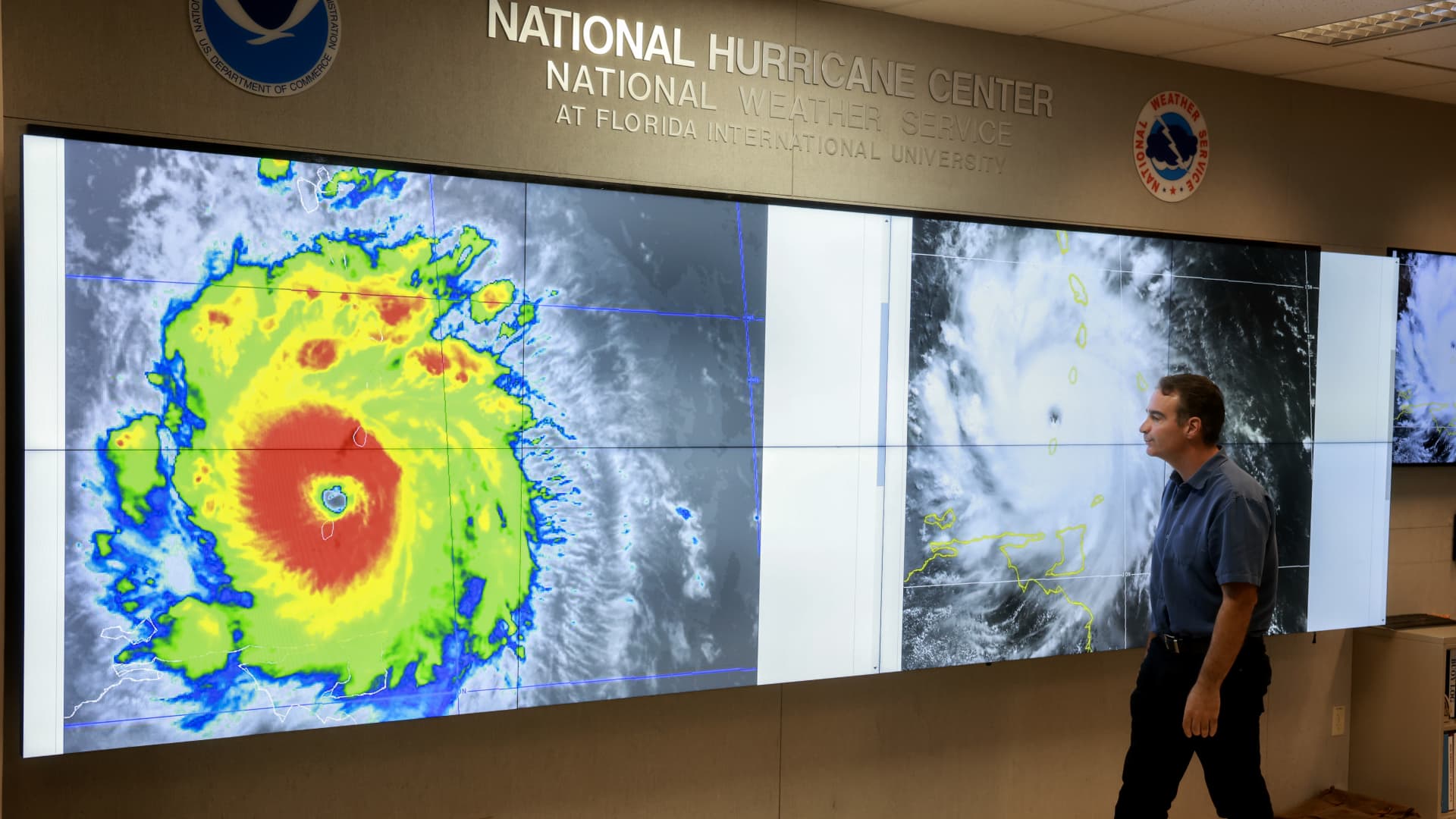John Cangialosi, Senior Hurricane Specialist at the National Hurricane Center, inspects a satellite image of Hurricane Beryl, the first hurricane of t
John Cangialosi, Senior Hurricane Specialist at the National Hurricane Center, inspects a satellite image of Hurricane Beryl, the first hurricane of the 2024 season, at the National Hurricane Center on July 1, 2024 in Miami, Florida.
Joe Raedle | Getty Images News | Getty Images
Government scientists on Thursday released a forecast for the 2025 hurricane season, predicting a 60% chance it will be an above-average season.
The National Oceanic and Atmospheric Administration, or NOAA, predicts this season will bring 13 to 19 named storms with winds 39 miles per hour or higher. It predicts six to 10 of the forecasted storms will grow to hurricane status, and three to five will become major hurricanes.
Laura Grimm, the acting administrator of the NOAA and a marine scientist, sidestepped specific questions about how budget cuts aimed at climate science would affect the organization’s work and highlighted the vital work of the agency to help communities prepare and save lives.
“Weather prediction, modeling and protecting human lives and property is our top priority. So we are fully staffed at the hurricane center, and we definitely are ready to go,” Grimm said in a news conference held in Jefferson Parish, Louisiana, to commemorate 20 years since Hurricane Katrina.
Grimm also pointed out, thanks to improvements in the science and technology over the last 20 years, that NOAA’s hurricane prediction was spot-on last year.
Hurricanes Helene and Milton caused more than $37 billion in insured losses in 2024, according to a report from Aon.
Despite those losses, the U.S. property casualty insurance industry saw its best underwriting performance since 2013, according to a report from the Insurance Information Institute and Milliman.
But the report concludes that January’s devastating wildfires in California and economic challenges related to tariffs could dampen the industry’s results in 2025.
Insurers and reinsurers are collectively facing more than $50 billion in losses from the Los Angeles wildfires.
The Midwest has also suffered outbreaks of severe thunderstorms with damaging hail, wind and tornadoes this spring. The Storm Prediction Center had tallied 883 local tornado reports this year as of Monday, 35% higher than average for this time of year.
Aon said the severe convective storms have caused an estimated $10 billion in insured losses in the first quarter. A storm over three days in May added another estimated $7 billion to insurers’ tally.
The last 10 years have averaged more than $33 billion annually in insured losses, a 90% increase from the previous decade.
It’s an existential threat to the insurance industry and its ability to provide affordable insurance to homeowners, according to Bill Clark CEO of Demex, a reinsurance analytics group. And the problem is getting worse, not better.
“Reinsurance (insurance for insurance) costs for severe convective storm losses are at a 20-year high and, coupled with limited availability, it is leaving insurers hamstrung and unable to transfer most of their mounting losses, ” Clark said in an email to CNBC.
Whether hurricanes, wildfires or severe storms. Aon blames the skyrocketing losses on growing exposure, meaning more people are living where climate risks are higher and the cost of their homes, cars and all the stuff inside is more expensive.
The insurance industry is working to push state and local efforts to build resiliency and improve mitigation efforts — meaning better building codes, public works projects that protect homes and properties, and tough standards on defensible spaces around buildings, for instance.
The president of Jefferson County Parish, Cynthia Lee Sheng, pointed to all the efforts made in the 20 years since Hurricane Katrina hit Louisiana, killing 1,392 people in 2005. The government overhauled levees, flood walls, and pumping stations.
“It’s estimated that $13 is saved for every $1 spent on mitigation efforts,” Sheng said. “Hurricane Katrina also changed the face of disaster recovery. Key agencies have learned to work together to provide assistance, coordinate efforts and ensure efficient response.”
— CNBC’s Dawn Giel contributed to this report.
www.cnbc.com
